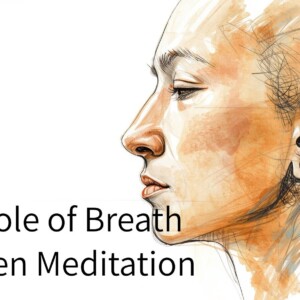
Common Mistakes in Zazen and How to Avoid Them
Introduction
Zazen may appear simple — just sitting and breathing — but like any meaningful practice, it carries subtle challenges. For beginners and even long-time practitioners, certain patterns can quietly undermine the depth and clarity of the experience.
This article explores common mistakes in Zazen and offers practical, compassionate guidance on how to avoid them, so you can sit with more presence, stability, and ease.
1. Forcing Yourself to Stop Thinking
The Mistake: Trying to silence all thoughts or “empty the mind.”
Why It Happens: Many people misunderstand meditation as a thought-free state.
What to Do Instead:
- Let thoughts arise without judgment
- Gently return to the breath when you notice you’re caught in thought
- Remember: the practice is noticing, not eliminating
“Don’t try to get rid of thoughts — just stop chasing them.”
2. Slouching or Rigid Posture
The Mistake: Sitting with poor posture — either too loose or too stiff.
Why It Happens: Beginners may not be familiar with the balanced, upright form.
What to Do Instead:
- Keep your spine straight but not tense
- Use a firm cushion or chair to support alignment
- Relax the shoulders and jaw while staying awake in posture
3. Over-Focusing on Technique
The Mistake: Becoming obsessed with doing everything “perfectly.”
Why It Happens: Seeking control or fearing failure
What to Do Instead:
- Stay simple: breath, posture, presence
- Let go of self-evaluation and embrace the moment
- Allow the practice to unfold naturally
4. Sitting Too Long, Too Soon
The Mistake: Pushing yourself to sit for 30–60 minutes right away
Why It Happens: Inspired enthusiasm or comparison with others
What to Do Instead:
- Start with 5–10 minute sessions
- Gradually increase duration over weeks or months
- Prioritize consistency over intensity
5. Expecting Immediate Results
The Mistake: Looking for peace, insight, or transformation too quickly
Why It Happens: Cultural conditioning around productivity and outcomes
What to Do Instead:
- Sit without expectation
- Trust the cumulative effect of regular practice
- Value the process over the result
“In Zazen, there is no goal. The sitting is the path.”
Bonus: Comparing Your Practice to Others
Avoid This: Everyone’s path is different. Comparing breeds doubt. Instead: Stay connected to your own breath, body, and presence.
Conclusion: Sit with Kindness and Awareness
Mistakes in Zazen are not failures — they are part of the learning.
By recognizing and gently adjusting these patterns, your practice can deepen with stability and self-trust. Let go of perfection. Return to presence.
Every breath is a new beginning. Just sit.
🌿 Want to go deeper into Zen and mindful living?
Explore ZEN for LIFE — a gentle guide to bringing presence, simplicity, and calm into your everyday routine.
Now available on Kindle.
#ZENforLIFE #MindfulLiving #EverydayZen










この記事へのコメントはありません。